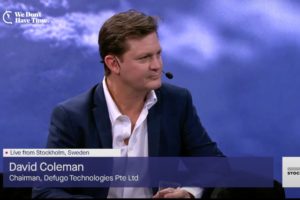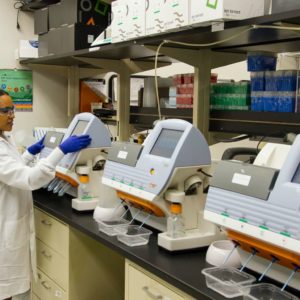What is the GET Economy?
The Green Energy Transition Economy (GET Economy) represents a transformative shift in how we produce, consume, transport, store and manage green energy, using today’s existing energy infrastructure. The IPCC’s AR6 Synthesis Report states that to limit global warming to 1.5°C, we must ensure that global greenhouse gas emissions peak before 2025 at the latest (next year…) and reduce them by 43% by 2030 compared to 2019 levels. With this short lead time we need a plan that has minimal change to existing process and infrastructure and maximum impact on reducing emissions. The need for a sustainable energy framework that is integrated into our existing operating model has never been more urgent.
However, the GET Economy is about more than just cutting emissions. While reducing carbon emissions is crucial to slowing climate change, the GET Economy also addresses broader environmental, economic and social challenges. It includes a focus on toxicity reduction, ensuring that our energy and industrial processes do not harm ecosystems or public health, it emphasizes proper resource management, promoting sustainable practices that conserve natural resources, minimize waste, and create circular economies. And above all The GET Economy is a proactive approach to build a resilient, sustainable future where economic growth is decoupled from environmental degradation.
The Need for a Green Energy Transition
For decades, our global economy has been heavily reliant on fossil fuels—coal, oil, and natural gas. These energy sources have powered industrial growth and technological advancement but at a steep environmental and social cost. The consequences of this reliance are stark: rising global temperatures, polluted air and water, and a growing disparity between energy-rich and energy-poor regions. Without a clear pathway, companies and governments alike are faltering in their commitments to reduce emissions.
Daily, we are witnessing a pullback from some businesses and governments on their climate and energy transition goals. For instance, Unilever recently announced that it would scrap its flagship goals to cut plastic pollution and preserve biodiversity, citing the complexity and scale of the challenges. Similarly, Shell has abandoned its 2035 greenhouse gas emissions reduction target, with the company’s CEO blaming uncertainty over the energy transition’s pace across different regions. BP has also scaled back its ambitions, emphasizing financial returns over previous climate commitments. Moreover, Volkswagen has delayed its target to reduce CO₂ emissions from passenger cars and light commercial vehicles by several years, moving its goalposts from 2025 to 2030. These corporate shifts are often justified by political and regulatory challenges, insufficient government support, and delays in technology deployment, which companies argue are beyond their control.
Governments are also struggling. Scotland recently abandoned its 2030 decarbonization target, acknowledging that it was “out of reach” following delays in its climate action plan. Germany has similarly signalled that its own 2030 climate goals are likely unattainable.
Why, then, are we seeing this retreat? Knowing that last year at COP28, governments agreed to the strongest energy transition package to date, with private sector backing and growing shareholder support, and recognizing the substantial economic opportunities presented by the green economy, it’s perplexing that progress is stalling and shocking that many think we are too late. The innovation, demand, and cost reduction of key technologies are higher than ever, creating an ideal environment for accelerated action. Yet, the core issue lies in the lack of coherent, holistic, cross-sectoral, and comprehensive plans that are not just aspirational but realistic in their scale of both resources and funding. Governments and corporations alike have struggled to formulate and commit to such plans, leaving critical gaps in the pathway to achieve these ambitious goals and targets. Crucially those that set these ambitious targets, did so without consulting any realistic plan, which had they done so would have shared the sentiment of the instructions on how to eat an elephant, one mouthful at a time. This disconnect between ambition and action risks undermining the very progress that is crucial for the future of our planet, people and economy.
Core Components and the GET Economy
Moving to the new Global Green Energy Economy is successful only if it happens in a well-thought-out and balanced manner, as there is a big gap between the old fossil fuel economy and the future Green Energy Economy. This “Tween Phase” is at least a 30-year period where existing infrastructure reaches end of life and phases out, replaced by the new. It’s a rather delicate moment, old fossil fuel systems coexisting with emerging green technologies in a transition energy grid. The sheer scale of this transition has been very poorly communicated by our leaders in terms of capital requirements and the gigantic volume of resources that this will require for us to reach our climate goals, though time is the most misrepresented resource of them all. The GET Economy is an opportunity for policy makers and business leaders to create a narrative that’s clear, achievable, measurable and that everyone can understand and follow. From this point all stakeholders need to be engaged, both the old fossil fuel and green energy asset stakeholders and our political leaders need to be in lock step, managing the process, keeping a keen eye on the development, pace of the transition and communicating this. The failure of the current communication on the energy transition is easy to see, even easier to criticise and hard for the people to believe in as we continue to miss goals and costs keep going up. The idea of “fair transition” is lost, unless leaders of this emerging clean economy select very clear steps, harness the infrastructure and the workforce skills of today’s economy, combined with a very robust plan that address both the decarbonization of existing systems of today and the creation of new, sustainable and clean systems of tomorrow. The GET Economy is this plan, a clear and realistic pathway to a clean, green future that brings all stakeholders alone.
Strategic Plans and Prioritization: The future Green Energy Economy necessitates significant infrastructure investments, particularly in expanding and modernizing electricity grids and energy storage solutions. Building the new economy involves accelerating the deployment of renewable energy technologies such as solar, wind, and clean hydrogen, with a focus on areas of highest potential. Effective resource management, adopting a circular economy approach, and optimizing land, water, and mineral use are crucial to sustaining this transition.
Balanced approach: The GET Economy requires a balanced approach that supports existing infrastructure, especially in liquid energy, while actively building and financing the new. This includes optimizing fossil fuel infrastructure, which has had trillions of dollars invested into it and provides the heavy lifting life blood of any modern economy. There is no instant replacement for this, nor the opportunity to just turn it off without sending society back to the stone age. What the GET Economy proposes is a faster transition to clean fuels by using this infrastructure, by replacing the dirty fossil fuels with renewable liquid fuels, thus limiting the carbon output and gradually phasing out the most carbon-intensive activities. Governments must resist “moonshot” solutions and focus on existing technology, where the profits from this energy can then be ploughed back into the next generation of infrastructure, technology and increased energy production. This is by no means a technical problem as an army of Green Technology as a Service (GtaaS) companies emerge, though it is an issue of policy. As such, Governments must implement policies that not only incentivize the adoption of green technologies but also streamline the permitting processes that can delay critical projects and appropriately allocate fossil fuel taxes and incentives to green energy providers such as removing excises taxes on locally made energy. The plan to leveraging existing infrastructure is also crucial to avoid stranded assets, speed up implementation time and dramatically reduce costs. This process also means all stakeholders in both the fossil fuel and green economies are engaged. For instance, integrating biomass derived liquid fuels and green hydrogen into the current energy mix can help repurpose existing facilities and reduce the economic impact of the transition by increasing the percentage of domestically produced energy over imported. This approach not only preserves value, is more profitable, it can accelerate a smoother transition by increasing local economic output with our farmers and utilizing proven technologies in new ways.
Global Cooperation: The success of the GET Economy also hinges on robust international cooperation. The upcoming submission of updated Nationally Determined Contributions (NDCs) presents a critical opportunity for countries to elevate their climate ambitions and align them with the GET Economy’s asset ledger. Public-private collaboration is key to driving innovation, securing investments, and ensuring that the transition is inclusive, comprehensive and profitable. Growing initiatives for multi-source catalytic funding and assistance packages are emerging to support developing nations in their transition efforts. These funding mechanisms are designed to pool resources from public, private, and multilateral sources, providing the necessary financial backing for ambitious climate projects. Sharing technologies, resources, and best practices across borders is essential to ensure that all regions can contribute to and benefit from this transition. The collective effort must be as inclusive as it is ambitious, though most of all the future economy must be profitable to ensuring that no country or sector is left behind in the race to build a sustainable future.
Conclusion
The GET Economy represents a bold pathway to the vision of a Carbon Free future—one where economic growth, social and environmental sustainability go hand in hand. By developing clear, actionable plans across key sectors, utilizing as much existing infrastructure as possible, prioritizing the interim transition phase, and leveraging international collaboration, we can make this vision a reality. More importantly this plan can be easily communicated and understood by everyone, allowing the collective will of the people and their actions drive the change, in a clear message to the politicians of today and tomorrow.
The failure to provide a cheap and sustainable energy grid, will mean a rapid return to the fossil fuel driven economy and a catastrophic failure of leadership that has squandered the opportunity to mobilise the collective will to save our planet.
Over the coming months, I will be diving into the different areas of the Green Energy Transition (GET) Economy. This isn’t just about exploring opportunities and sharing knowledge—it’s about galvanizing a movement, with a commitment to rallying support, building a knowledge base, and creating a powerful momentum that will drive the GET Economy forward. This journey will be public, transparent, and inclusive, inviting you to co-create and accelerate this transformation with me. Together, we have the power to shape a sustainable future where economic growth and environmental stewardship go hand in hand. Let’s not just talk about change; let’s be the change. Join me in this mission – Let’s #goGETItdone.






